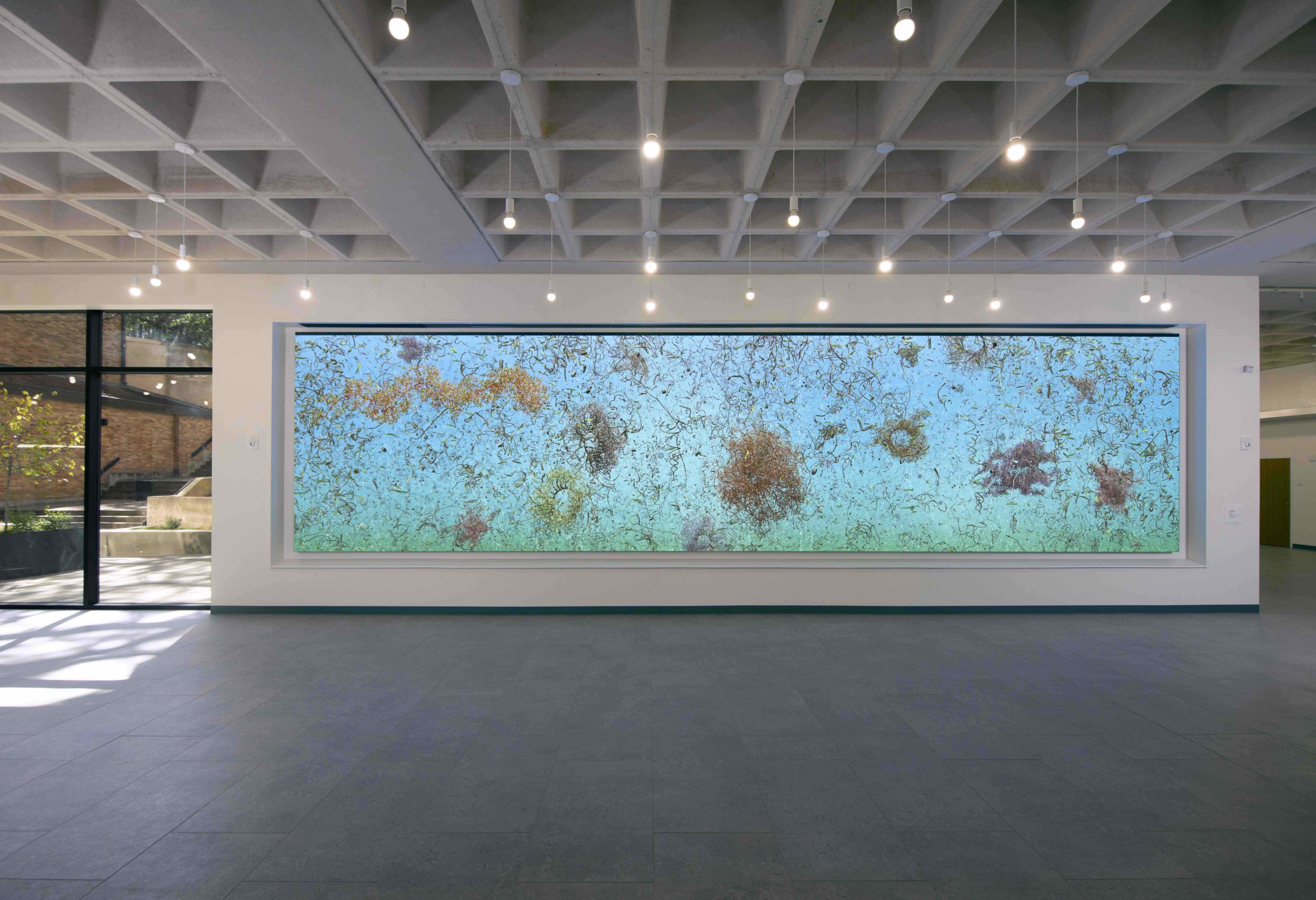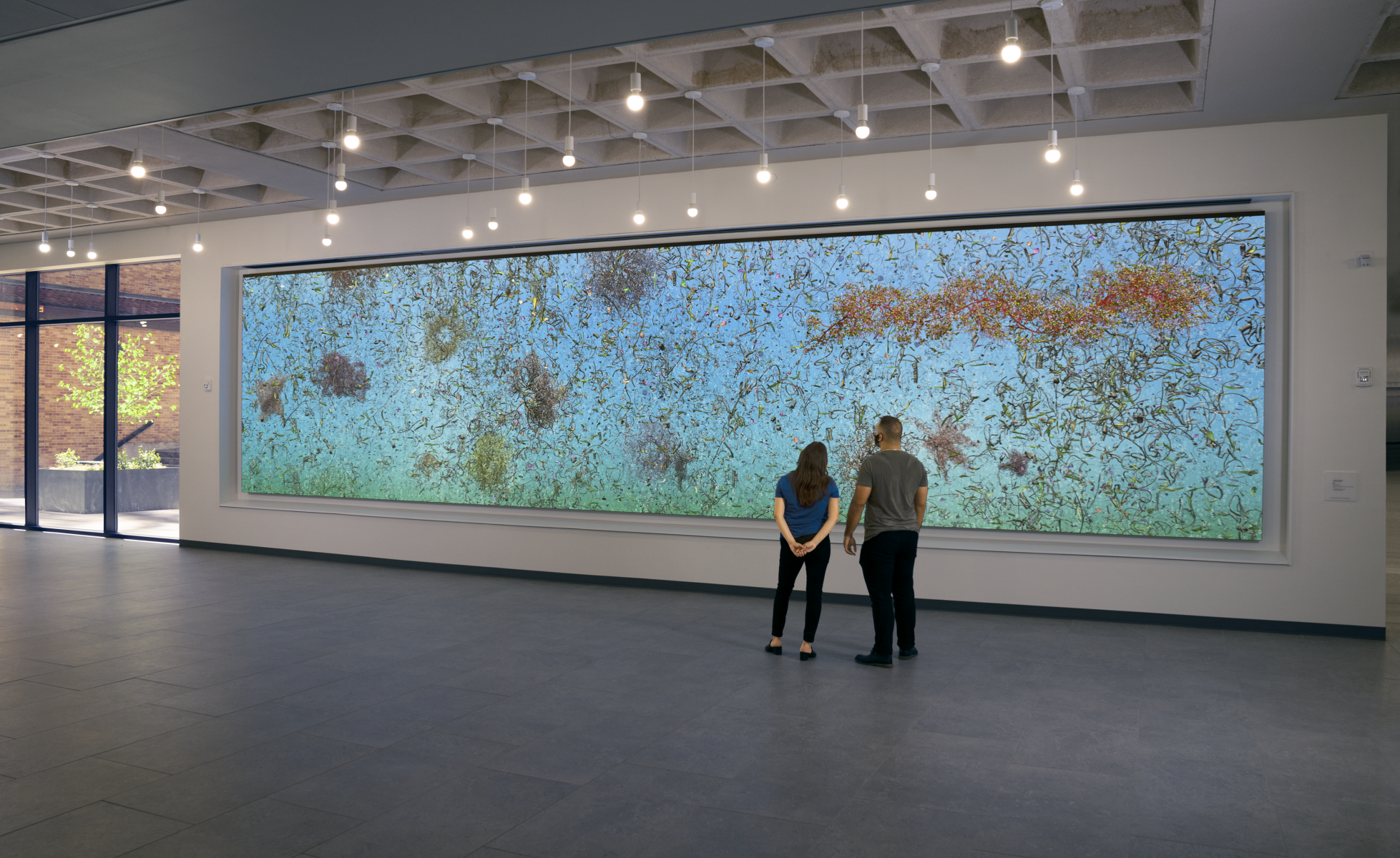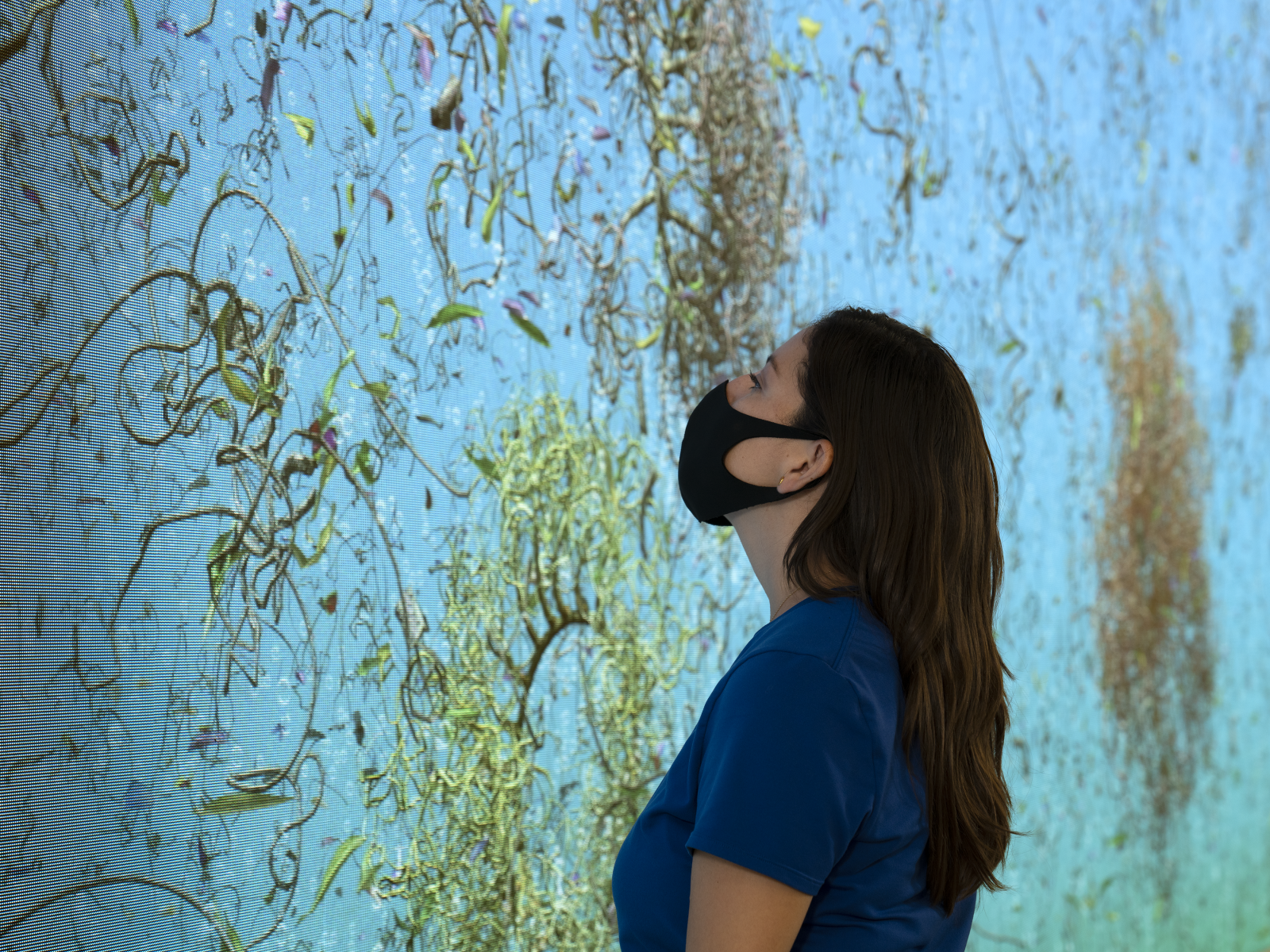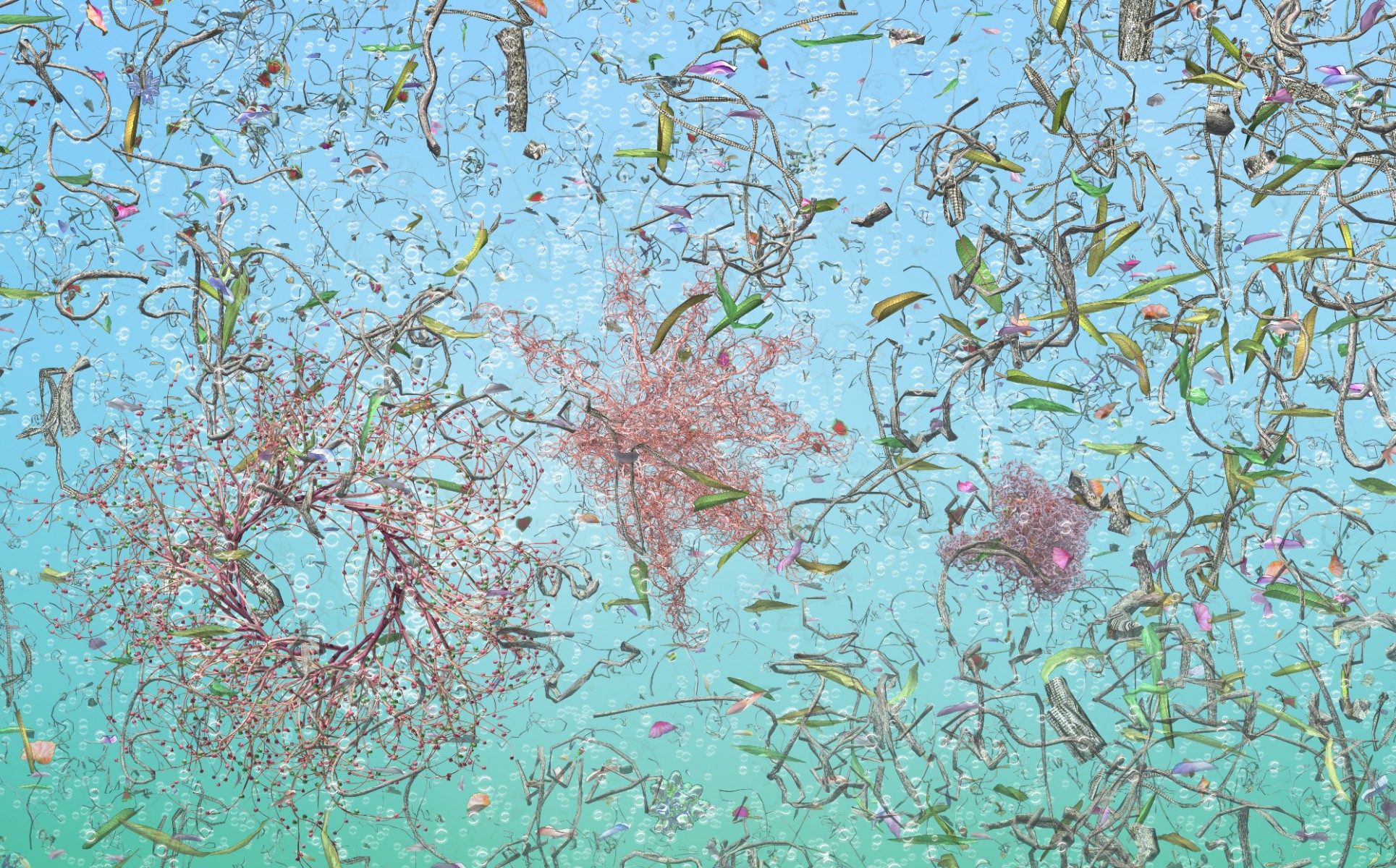





Client: College of Natural Sciences at the University of Texas at Austin
Location: Austin, TX, United States
Completion date: 2020
Artwork budget: $500,000
Project Team
Founding Director and Curator of Landmarks
Andrée Bober
Landmarks, the public art program of the University of Texas at Austin
Project Manager for Landmarks
Nisa Barger
Landmarks, the public art program of The University of Texas at Austin
Associate Dean
Dean Appling
College of Natural Sciences
Commercial Construction & Architecture
The Beck Group
Technical Support
Ian Campell and LAITS Technology Integration Team at UT Austin
Technology Manager
Bill Haddad
Landmarks, the public art program of the University of Texas at Austin
Commercial Construction & Architecture
Payette
Artist
Jennifer Steinkamp
Architecture and Interior Design
STG Design
Capital Planning and Construction
Keith Westmoreland
Overview
Jennifer Steinkamp’s Eon is a 30 x 9-foot digital installation commissioned for Welch Hall, the largest academic facility at The University of Texas at Austin and part of the College of Natural Sciences. Blurring the line between the biological and virtual, the site-specific installation visualizes a fictional scene of primordial life, rendered through multiple layers of digital animation. Eon draws inspiration from the concept of symbiosis, the mutual cooperation of unlike organisms— such as flowers and the insects and animals that pollinate them, or friendly bacteria inside the human microbiome. Biomorphic shapes undulate across the screen, punctuating an aqueous backdrop with bursts of pink, yellow, and multicolored fragments that resemble a swarm of living organisms and plants. The installation transforms the main corridor of Welch Hall into a hyperreal, simulated natural world, while signaling the research that takes place within the building. A vision as powerful as it is beautiful, it serves as a reminder that life on earth began through cooperation, and that our future depends upon it.
Goals
The goal of this project was to introduce a work of art into the newly renovated Welch Hall, a building that hosts tens of thousands of students each day. It was important that the work connect to the natural sciences, which are both taught and researched within the building. It was equally important that the work draw the eye of those inside the building as well as passing pedestrians, since the installation is clearly visible through Welch Hall’s expansive glass façade. This high visibility also required that the installation complement other works from Landmarks’ collection sited nearby. Eon is a fluid counterpoint to the rectilinear insistence of the surrounding campus, suggesting the organic matter that begins and sustains life.
Process
Many of Steinkamp’s large-scale installations explore the natural world, making her a perfect choice for the College of Natural Sciences. Her process for developing this design included close coordination with the building renovation team, as well as input from Landmarks and the College of Natural Sciences. The animation was rendered in the artist's studio and was configured for the LED display with the assistance of Bill Haddad, Landmarks Technology Manager.